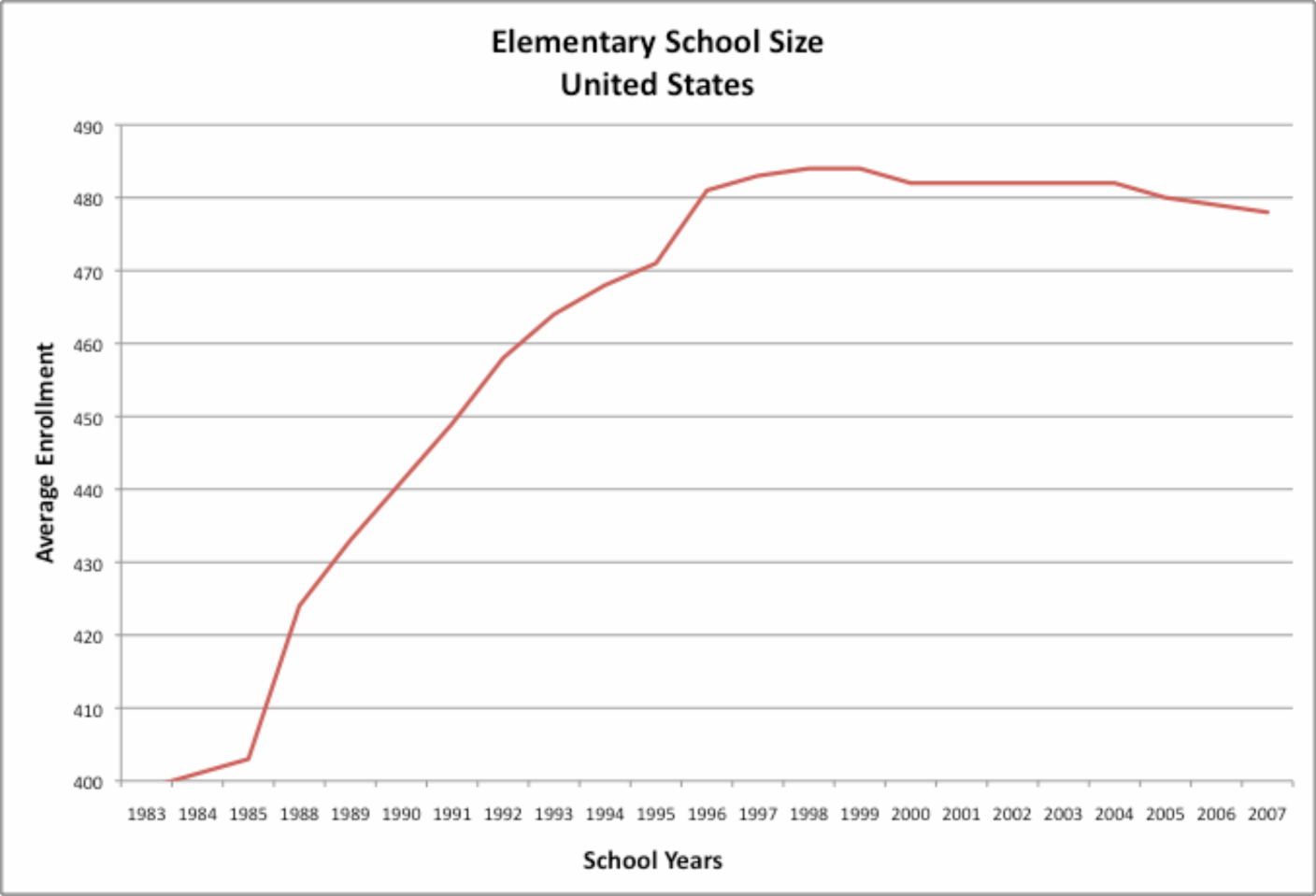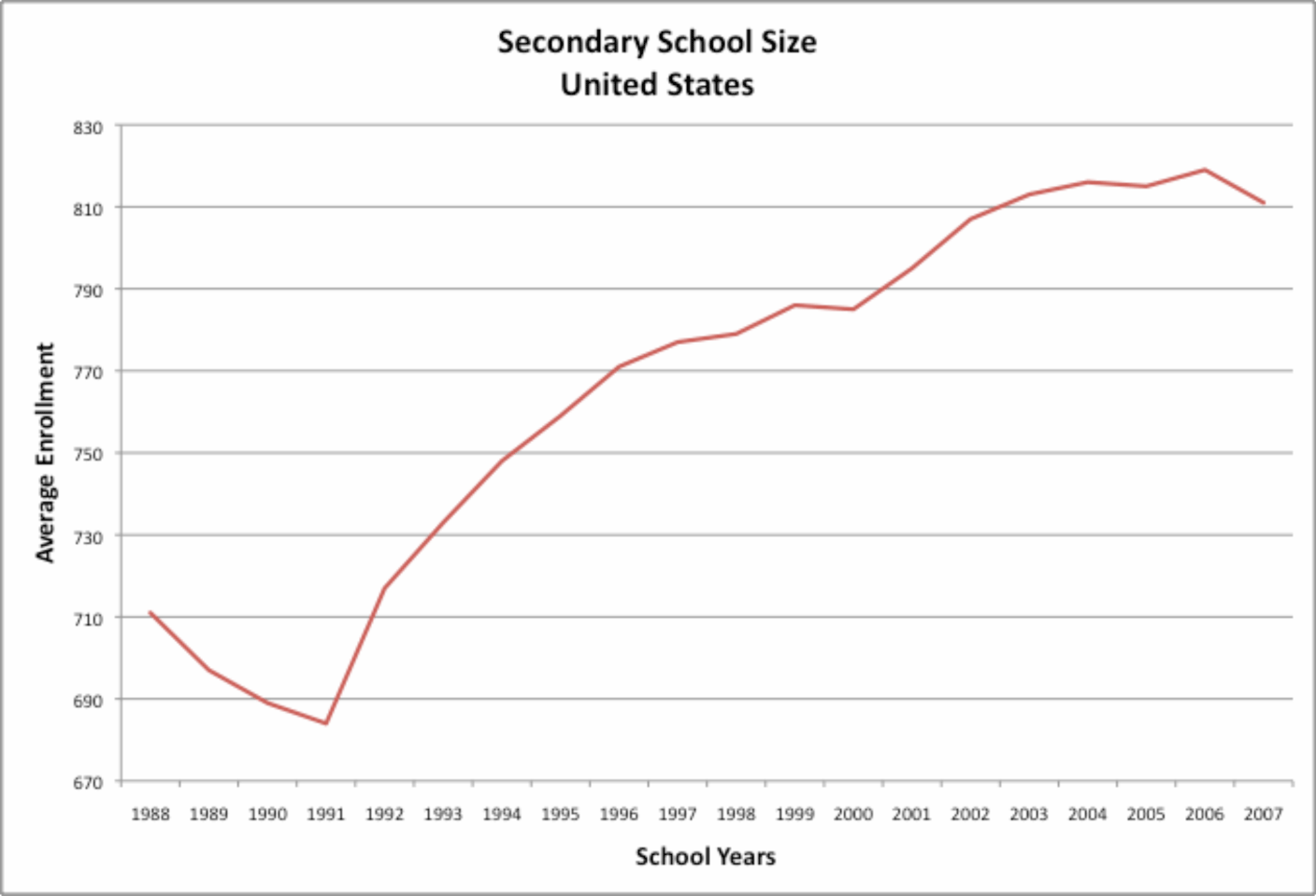Is the Average Enrollment of Schools Rising or Falling?
Why is this question important? The trend over the past 75 years is for schools in the United States to grow in average enrollment. This growth was partially the result of the urbanization of the country as well as a response to economic theory. The theory of "economy of scale" was rapidly adopted across the United States beginning in the 1960s. The theory postulates that as units of operation grow, the units become more cost effective to operate. Another popular theory held by educators of this period was that larger schools offered students a better educational experience through enriched curricula resulting in improved student achievement. It is important that stakeholders examine how average school size changed over the years and the impact school size has on the cost of education and student achievement.
See further discussion below.


Source(s): U.S. Department of Education, National Center for Education Statistics, Common Core of Data (CCD), Public Elementary/Secondary School Universe Survey, 1982-83 through 2005-06 http://nces.ed.gov/programs/digest/d07/tables/dt07_092.asp?referrer=list
Result(s): Between 1940 and 1990 the number of elementary and secondary schools declined by 69%. This happened despite a 70% increase in the population of the United States. During this period the average enrollment per school grew by almost 25%. The data made available through the Department of Education for the years 1982-1983 through 2005-06 reveals an approximate 20% growth in the enrollment of elementary schools and a 15% growth in secondary schools. The growth peaked in elementary programs in 1999 and has subsequently remained steady at approximately 480 students per school. Secondary institutions have also experienced a reduction in the rate of growth since 2003.
Implication(s): The significant growth in school during the last half of the twentieth century was one the major systemic interventions experienced in American education. The potential impact school size may have on the cost of educating students as well as its impact on student achievement is sizeable. Because of the serious repercussions this practice may have on the education system, it needs to be rigorously researched.
Author(s): National Center for Education Statistics
Publisher(s): U.S. Department of Education, Institute of Education Sciences, (IES)
Study Description: This data comprises the average enrollment and percentage distribution of public elementary and secondary schools, by type and size in the selected years 1982-83 through 2005-06. The data reflects reports by schools rather than states or school districts. Percentage distribution and average enrollment calculations excluded data for schools not reporting enrollment. Enrollment data was available for 93,845 out of 97,382 schools in 2005-06. Detail may not sum to totals because of rounding.
Definition(s): Elementary schools: Schools First through sixth grade.
Secondary schools: Schools seventh through twelfth grade
Citation: National Center for Education Statistics. (2007). Public elementary and secondary schools, by type of school: Selected years, 1967-68 through 2007-08[Table 92]. Retrieved from http://nces.ed.gov/programs/digest/d07/tables/dt07_092.asp?referrer=list
